Over the last several months we’ve been taking a look back at some of our favorite coasters celebrating their 20th birthdays this year in our 19 for ’99 series. This week we’re looking at a wooden coaster that is no more, but did have some pretty historic coaster significance over its life: ROAR at Six Flags Discovery Kingdom.
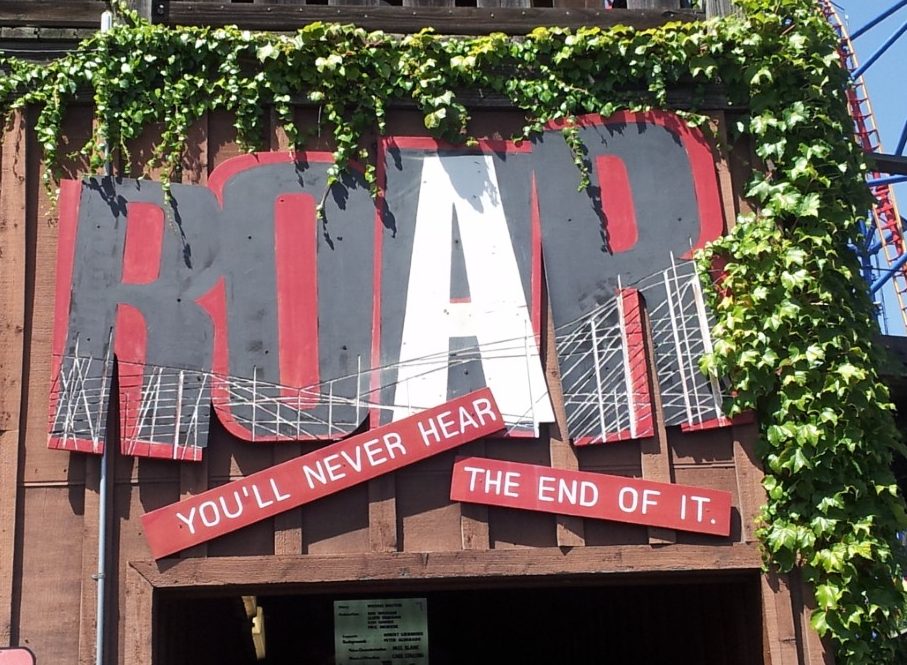
Opening of Roar in 1999
Roar opened on May 14, 1999 at what was then called Six Flags Marine World. The park had until just a couple years before been entirely an animal park, going through a series of different locations and names. In 1997, Premier Parks – which merged with Six Flags – took over operation of Marine World and began to turn it into a mixed animal park and theme park. They added some small theme park rides in ’97, and in ’98 some relocated and off-the-shelf coasters. Roar would take up a former parking lot, rising 95 feet tall and 3,291 feet long.
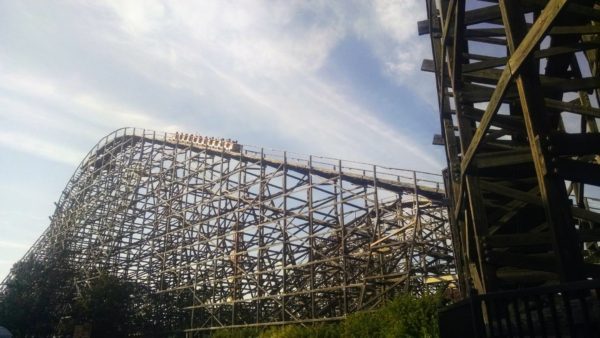
It was the parks first custom(ish) coaster installation when it opened in ’99, and was a major step in the transition from purely and animal park to full on amusement park. As staff writer Kevin Courtney from the Napa Valley Register said at the time, “combine the sight of Roar! With Marine World’s new moniker, Six Flags, and suddenly you have a theme park with some bona fide thrill ride credentials.”
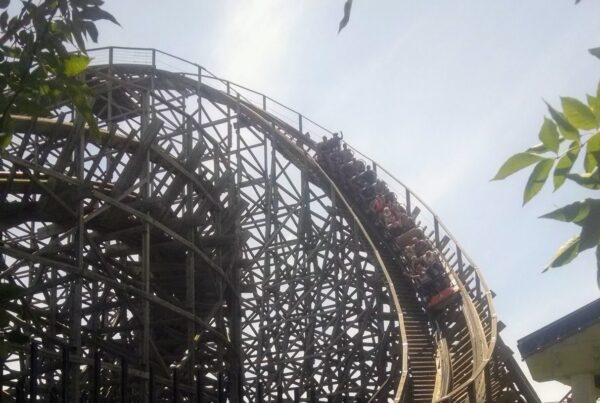
Ride Layout and Experience
Roar opened as just the third ever roller coaster built by Great Coasters International (GCI). The wooden roller coaster company is still going strong today and responsible for some of the best modern wooden coasters (see our review of Mystic Timbers from a couple of years ago). Even more significantly, Roar the first to use a signature part of any GCI ride: Their signature Millennium Flyer Trains. The ride was similar – although not identical to – the “Roar” at Six Flags America, with one of the major difference being those trains.
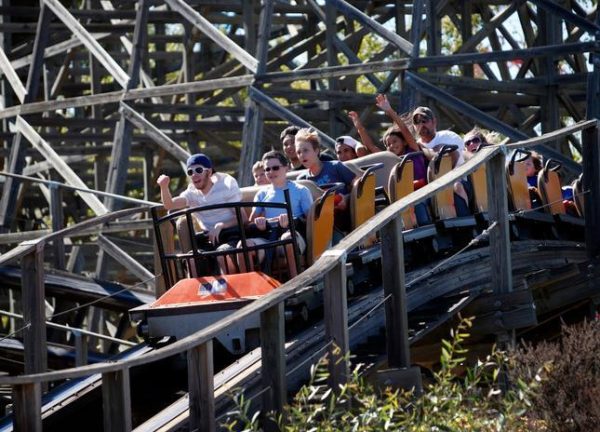
A good look at the Millennium Flyer trains that now exist on all GCI coasters (courtesy San Jose Mercury News)
The layout of the ride features many of the things that became standbys in future GCI designs. The ride started with a twisted drop similar to what we’d see on many future GCI coasters, including Gold Striker, a GCI opened at nearby California’s Great America in 2013 that is one of my favorite wooden coasters. The ride had a tight, twisted design with lots of banked turns, reaching a speed of 50.5 mph. It had 12 airtime moments, six reversals, and 22 crossovers. Plus, it featured a long tunnel in the middle of the ride, another typical GCI element. And, like many future Great Coasters projects, it did an excellent job keeping pace.
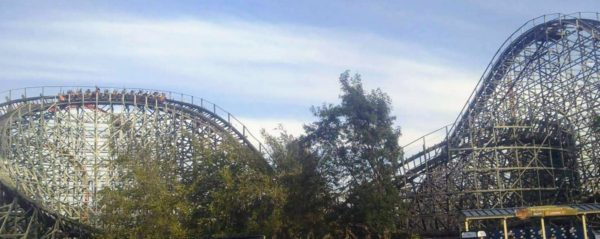
“You want it to go, go, go,” Mike Boodley, the designer of the ride, told reporters at its opening media day. “Once the cars enter the first plunge, there’s not a second’s pause the rest of the way,” he said. The ride was met with exuberant reviews at opening. The new Millennium Flyer trains helped the coaster meet those design goals, and even as it aged, it remained relatively smooth and fun.
Closing, Conversion, and Legacy
Sadly, like Gwazi from earlier coasters in our 1999 series, Roar was not destined to make it a full 20 years. In 2015 the park closed the ride with a final farewell on National Roller Coaster day.
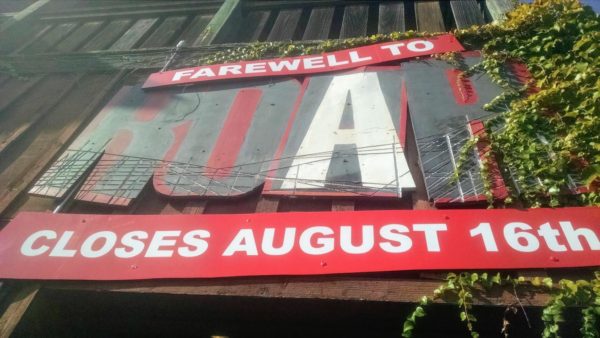
“It’s been a great ride for us, and 11 million people have ridden the Roar since it opened,” said Kirk Smith, the park’s marketing director. “For a lot of people it’s their first ‘big boy’ roller coaster ride,” said Smith of Six Flags. “And a lot more dads and sons, moms and daughters. We had a couple who were married on the Roar.”
As evidence of the popularity of Roar, Nancy Chan, the parks communication director at the time, pointed out that one enthusiast drove all the way from New Orleans just to ride Roar. Arriving on Thursday, he had ridden the coaster 31 times as of his last ride on Sunday, which was the third-to-last trip for Roar.
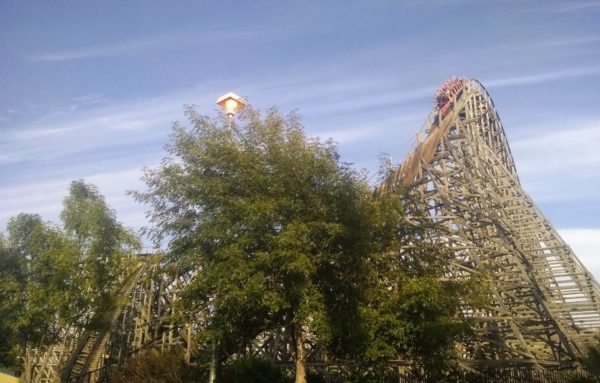
The twisted drop of Roar was one of its signature GCI elements. In a way, it lives on in the twisted (steeper) drop on Joker.
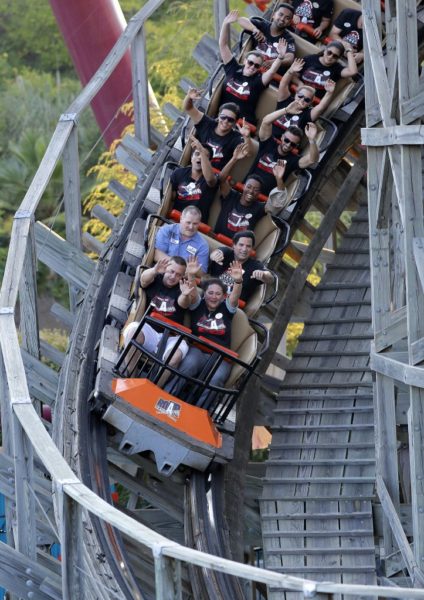
One of the final rides on Roar (courtesy Solano Daily Republic)
The article on the closing in the San Jose Mercury News talked about Justin Griffin, a local who had ridden the ride almost 500 times over 13 years. On the last day Griffin told the newspaper “it was a smooth as when it first opened!”
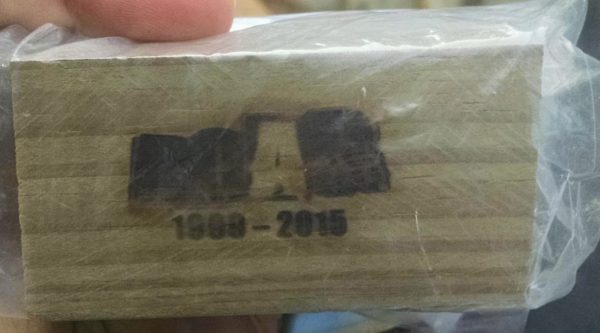
The park gave out pieces of Roar on its last day.
Not long after Roars last day, the next life for the coaster was announced. It was being converted by Rocky Mountain Construction to Joker, the first RMC hybrid in Northern California, only the second on the West Coast, and the first time a GCI coaster had been converted. At the time we tracked the Joker construction closely, with multiple construction tours. The new ride opened as a hit, and there are definitely still parts of the old Roar layout that are evident.
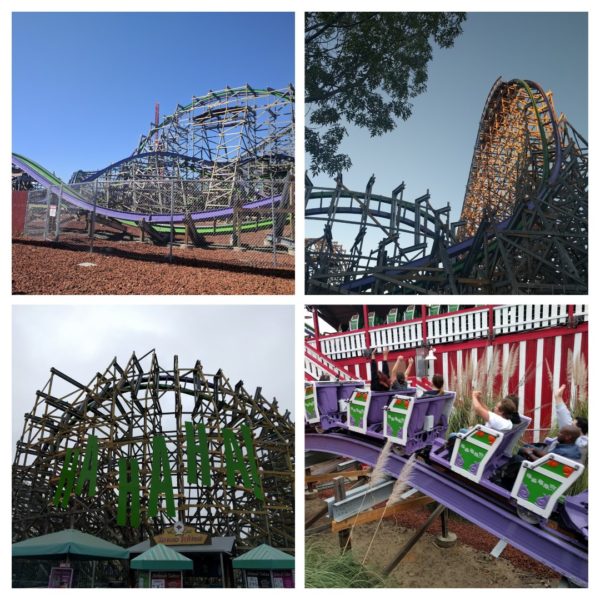
The legacy of Roar lives on as the RMC Hybrid Joker
Still, I’ll always miss the classic GCI a little bit. Luckily, at least, in Northern California we’ve got Gold Striker not too far away. The evolution of a GCI coaster that started with Roar and the Millennium Flyer trains and continues today is evident in it.
Did you get a chance to ride Roar before it closed? Share your memories of this pioneering GCI wooden coaster with us! Leave them in the comments below, or go share them with us on our Facebook Page or on Twitter.
And if you’ve missed any of our other 19 for ’99, check out all of the rest of the series here, and keep an eye out for the next installment in a couple of weeks!

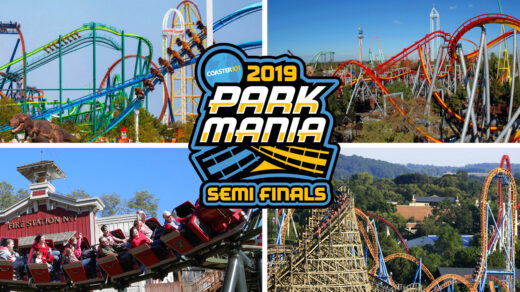
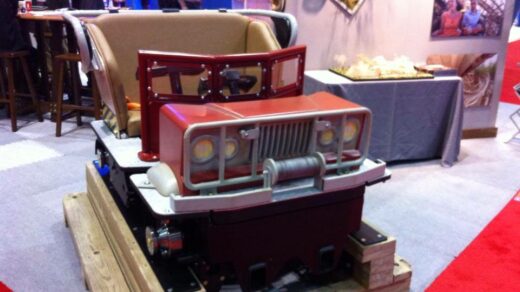
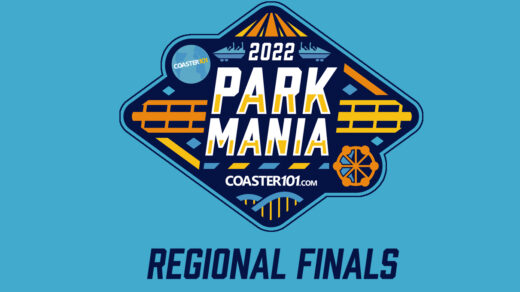



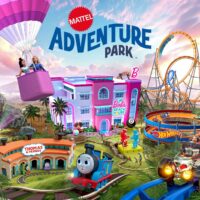





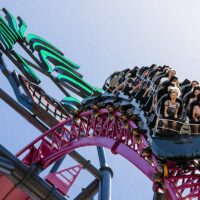
Recent Discussion